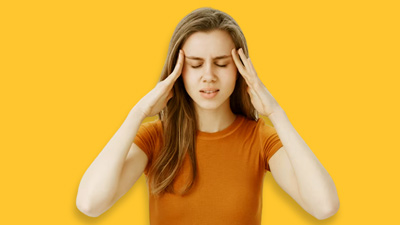
Pilates has been one of the recommended systems to take you back and help you recover after COVID-19. The reason behind this that usually people post-covid experience longer systems and despite testing negative, their recovery period extends to weeks. Exertion, fatigue, achy body, sleepiness, etc. are some of the after-effects of the infection that may continue for a couple of weeks after recovering. Pilates is a gentle form of exercise that is done in a controlled environment with a limited number of repetitions. Thus, it is a perfect system to promote post-covid recovery without putting much pressure on the body.
Before you begin with the pilates exercises that we are mentioning below, here are some words of caution. In the beginning, Pilates is performed in the lying position so that the person is comfortable and their heart rate is controlled. Breathing is always controlled in Pilates and so, there is nothing to worry about when you are performing the exercises after covid recovery. But you need to make sure that you don’t exercise when you are stressed or anxious as then your heart rate would be higher and you might not reap enough benefits from the exercise.
Exercises for Post-Covid Recovery

1. Breathing and Breath Awareness
While traditionally Pilates is done by inhaling through the nose and exhaling through the mouth, during the recovery period, you must breathe in whichever way you are comfortable. If there is a lot of congestion then those inhalations and exhalations have to be soft and gentle. Never force your breath neither in nor out because that can create more congestion and trigger other issues.
- Start in a seated cross-legged position. If you have knee issues, keep your legs straight or sit on a chair, whichever way is comfortable.
- Bring your attention to the abdomen.
- The first three breathes are abdominal breaths.
- Inhale and bring the air to your stomach. Slowly exhale while focusing on the stomach contractions due to breathing.
Now, bring your attention to the lateral breath.
- Lateral breath is preferred pilates breathing breath.
- In this, you hold your stomach inside and extend the ribcage.
- As you breathe in, you expand and open the ribcage and exhale to bring the ribcage back together.
- Do three repetitions of these.

Now, we will perform Chest Breaths.
- Bring the air on top of the chest and top of the shoulder.
- Imagine that it is expanding and going upwards.
- Do three repetitions of these.
2. Chest Expansions
- Inhale and open the chest to lift the chest and chin upwards.
- This is kind of opening everything up.
- As you exhale, you bring the arms together and place them on your back.
- It would look as if you are giving yourself a hug.

3. Cat and Dog Stretch
- Come to all four positions with your palms and toes touching the ground.
- Breathe in while rounding the back and exhale while arching the back.
- We will add a little leg movement in this position with one leg in and out.
- Breathe in your you round the back and bring one knee close to the chest.
- As you exhale, arch the back and expand the leg back outwards and above.

Now we will move to the back.
- Lie down with your hips up and arms towards the ceiling.
- If somebody is unable to keep the hips up, place a pillow under the hips to extend support.
- The second version of this arms movement where you keep one arm up and one arm down in motion.
- Finish this with arm circles.

Arm movements are involved to improve breathing as a lot of secondary muscles situated at the upper back are involved in breathing. When one uses arms, they get activated thereby improving the breathing.
Read More Articles in Exercise and Fitness







